This post may contain affiliate links that at no additional cost to you, I may earn a small commission.
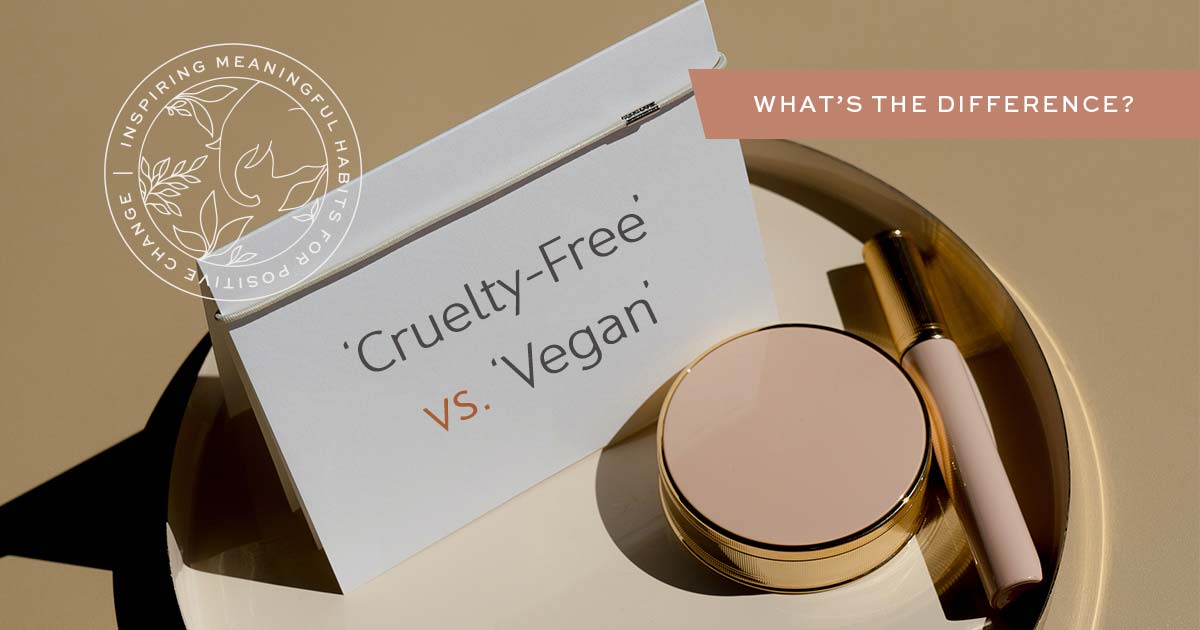
Animal ‘Cruelty-Free’ is a term used to describe cosmetics, personal care, and household cleaning products as not tested on animals.
‘Vegan’ is defined as products that do not contain any animal-derived ingredients or by-products.
Therefore, ‘Cruelty-Free’ does not always mean ‘Vegan.’ And vice versa.
Quick Notes:
- Cruelty-Free, but not Vegan means it’s not tested on animals, but it contains animal ingredients
- Vegan but not Cruelty-Free means it doesn’t contain animal ingredients, but it was tested on animals
- Both Cruelty-Free and Vegan means it wasn’t tested on animals, and it doesn’t contain animal ingredients
- Neither Cruelty-Free nor Vegan means it’s tested on animals and it contains animal ingredients
Examples:
It might be easier to understand the difference between Cruelty-Free and Vegan cosmetics if I provided some real-life examples.
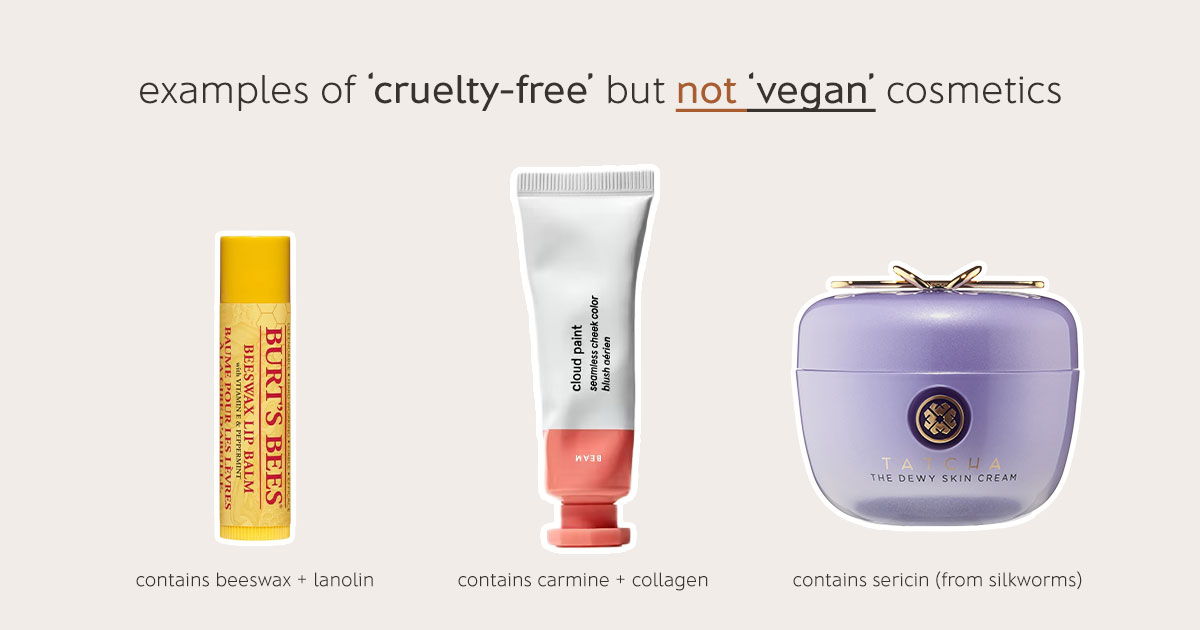
Examples of Cruelty-Free cosmetics that are NOT Vegan:
Burt’s Bees is cruelty-free (Leaping Bunny certified) and has been verified as not allowing any of its products or ingredients to be tested on animals. However, most of their products, like their Lip Balms, contain beeswax and lanolin, which are derived from animals. Making their products NOT vegan.
Glossier doesn’t test on animals (Leaping Bunny certified), but some of their products, like the Cloud Paint, contain carmine, which is derived from crushed-up beetles. Collagen is also listed as an ingredient, but the source is not disclosed, so it can possibly be from animal sources. This means Glossier’s Cloud Paint is cruelty-free, but not vegan.
Tatcha is another brand that claims to be cruelty-free while selling some products that contain animal-derived ingredients, including their best-selling Dewy Skin Cream, which contains sericin derived from silkworms.
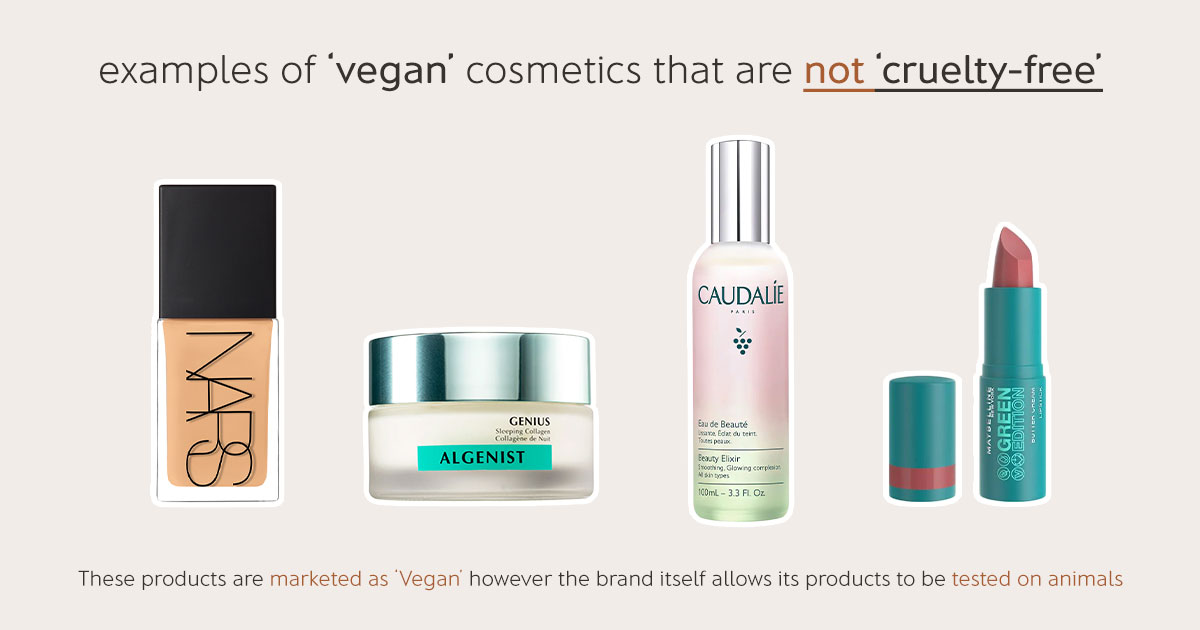
Examples of Vegan cosmetics that are NOT Cruelty-Free:
NARS is not a cruelty-free brand since they announced their products are for sale in China, and they consented to have their products tested on animals as required by China’s animal testing laws. But that hasn’t stopped NARS from marketing and labeling some of its product offerings as ‘Vegan Formula’, including its best-selling foundation. This is an example of a ‘vegan’ cosmetic product that is NOT cruelty-free.
Algenist has a line of skincare products that are marketed as containing Vegan Collagen. However, Algenist’s animal testing policy states they allow their products to be tested on animals when required by law, regulation, or a governmental authority. Although Algenist offers a collection of vegan skincare made from a plant-based alternative to animal-derived collagen, Algenist is NOT a cruelty-free brand.
Caudalie claims most of its products are vegan except for some containing beeswax or honey. However, Caudalie admits it sells its products in China, where as they put it, “authorities may impose random animal testing.” Caudalie products may be Vegan, but they’re not Cruelty-free.
Maybelline recently launched a vegan makeup line called Green Edition, where they claim none of their formulas from this line contain animal-derived ingredients. But Maybelline is not a cruelty-free brand because they allow their products to be tested on animals when required by law.

Examples of Vegan AND Cruelty-Free Cosmetics:
Biossance, The Ordinary, Milk Makeup, and Merit are all cruelty-free brands where none of their products or ingredients are tested on animals. And all of these brands are 100% vegan, meaning none of their product offerings contain any animal-derived ingredients or by-products. These brands are both Cruelty-Free AND Vegan.
Let’s Dig Deeper:
Now you know the main difference between products labeled as Cruelty-Free and Vegan.
Here are some commonly asked questions I get when I mention something is Cruelty-Free or Vegan.
But how can something be called cruelty-free but contains animal ingredients?
Because there’s no legal or standard definition for using the term Cruelty-Free, according to the FDA, “The unrestricted use of these phrases by cosmetic companies is possible because there are no legal definitions for these terms.”
The explanation I’ve provided above is how the label ‘Cruelty-Free’ is generally used by companies, manufacturers, and consumers, based on my research in the field for the past 8 years.
But I understand why some ethical consumers are confused and frustrated when brands call themselves cruelty-free but use animal products.
It seems counterintuitive that these two terms, Cruelty-Free and Vegan, can be mutually exclusive.
Know that, at the end of the day; companies are using these labels as marketing terms. Without a standard or legal definition of the terms, they can use them in whichever way they like to get you to buy their products.
Cruelty-Free Certifications and Vegan Brands
A common misunderstanding I get from readers is assuming Leaping Bunny-certified brands are vegan. This is not the case.
Leaping Bunny investigates only the brand’s animal testing policy. It’s thorough and can be a lengthy process. But they don’t look into whether brands use vegan or animal-derived ingredients. As a result, many Leaping Bunny-certified brands are not vegan.
Vegan ≠ Clean, Sustainable, Ethical Products
Another misconception I hear is Vegan products mean it’s clean, sustainable, or ethically made. This is only sometimes true.
As an alternative to animal ingredients, companies can choose from various components obtained from plants, minerals, or synthetically.
The term ‘Vegan’ does not specify the type of non-animal-derived ingredients brands choose to use. It also says nothing about how they were made, grown, extracted, or mined. In addition, other factors like environmental impact, sustainable manufacturing, and ethical working conditions are not factored into the umbrella term for ‘Vegan’ cosmetics.
Vegan Brand vs. a Vegan Product
Some consumers also get mixed up between an entirely vegan brand and one offering some vegan options.
It also doesn’t help that some brands claim to be 100% vegan but then sell a one-off item that isn’t.
For example, many household cleaning brands claim their formulas are 100% vegan but sell wool dryer balls. Or haircare brands state they’re 100% vegan but then offer hair brushes made with animal bristles.
Here’s a tip, if you see a brand advertise its products as Vegan, don’t assume all of its products are vegan. It may be that one item that is vegan.
If you wish only to support entirely vegan and cruelty-free brands, check out this list.
Cruelty-Free Brands and Parent Companies
Another note I ought to mention is the discussion on whether brands that are owned by an animal-tested parent company should still be considered cruelty-free or not.
For example, NYX and Urban Decay are owned by L’Oreal, a parent company that is not cruelty-free. Some cruelty-free consumers may choose to continue to purchase from NYX and Urban Decay as they hope it will convince the parent company, L’Oreal, to stop testing on animals.
Even though NYX and Urban Decay may not test on animals, some ethical consumers may not consider them cruelty-free because of their affiliation with animal-testing L’Oreal. And believe that the money spent on those brands will go into the pockets of L’Oreal, and, therefore, indirectly fund more animal tests administered by L’Oreal.
This is always a touchy subject, and I feel there’s no right or wrong way to go about this. There are many different factors to consider when deciding which ethical brand to support and buy from. I always encourage others to do what feels right to them.
Summary
To bring it all together, although there is no legal or standard definition for the terms ‘Cruelty-Free’ and ‘Vegan’ in cosmetics, personal care, and household cleaning products, the two terms are generally used as follows:
‘Cruelty-Free’ = Not tested on Animals.
‘Vegan’ = No animal-derived ingredients or by-products.
It’s possible for a product to be cruelty-free but not vegan or the other way around.
While it’s important to know the differences between the terms, you’ll also want to know the difference between Cruelty-Free Certifications, Parent Company Animal Testing, and other Clean, Sustainable, Ethical marketing claims to make the best informed and ethical choice that fits your values and ethics.







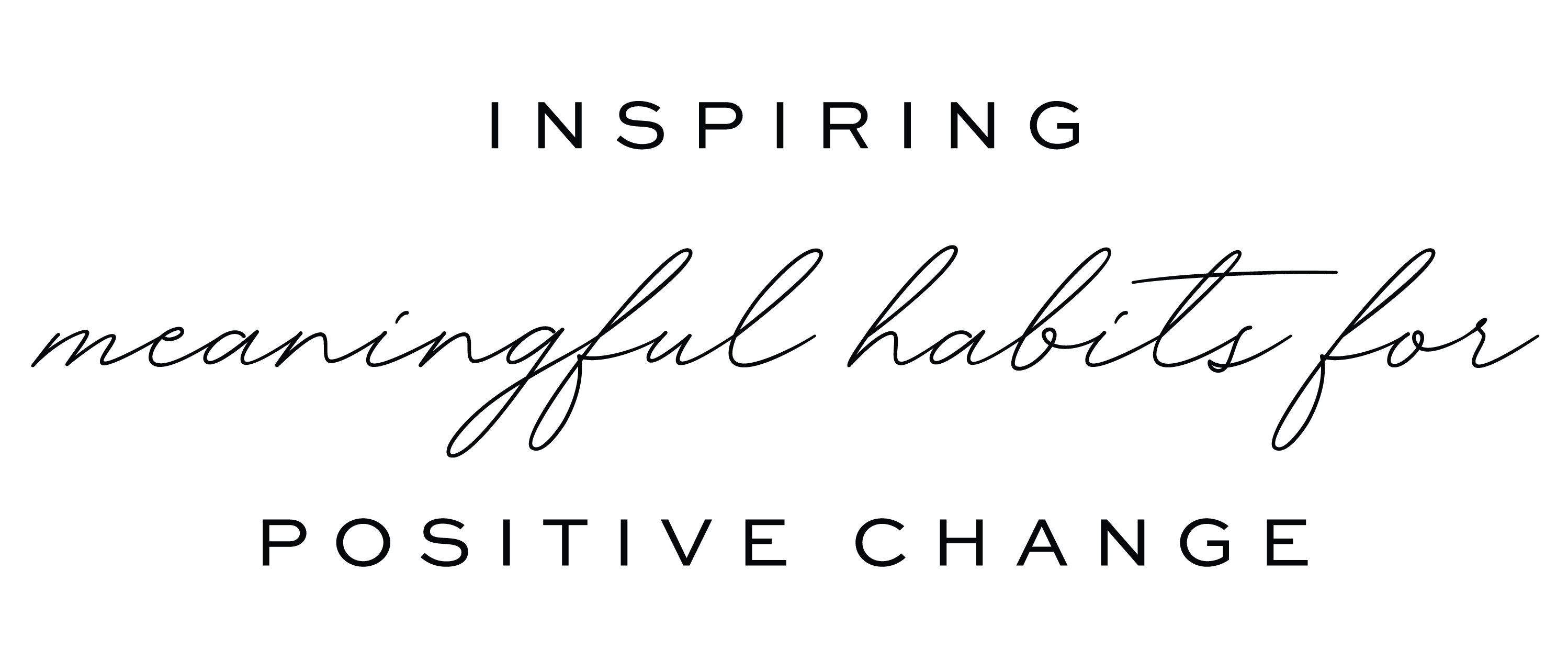
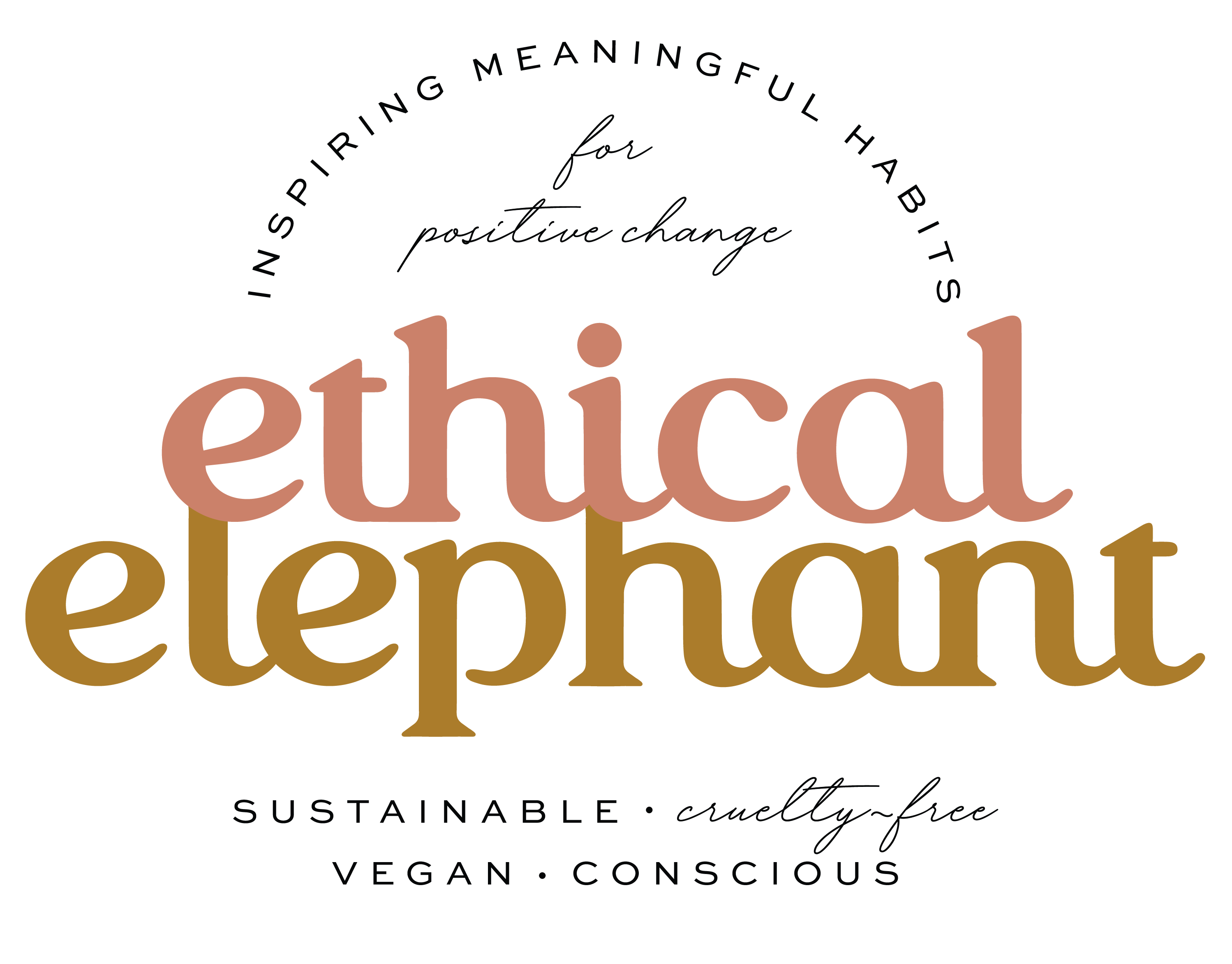
32 thoughts on “Cruelty-Free vs. Vegan: Understanding the Differences and Why They Matter”
No coverfx is not fully vegan I’ve emailed them about this myself. You should do the same. Like two or three products aren’t vegan while most others are.
Really now? Hm.. that’s interesting! They pride themselves on being cruelty free and all vegan. We will definitely email them and see what’s the dealio! Thanks so much for bringing that up!
Hi Vicky,
Loved this post – I recently found out this was the case when scrutinising Burt’s Bees’ cruelty-free status, as they clearly aren’t vegan, and their parent company tests on animals. You can find out more here: http://www.curiouslyconscious.com/2015/05/is-burts-bees-really-cruelty-free.html
I’m now trying to only buy natural, cruelty-free, and vegan products, although I’m not against the use of certain materials such as beeswax, and honey.
Besma (Curiously Conscious)
Hi Hi Besma!
I know what you mean, I’ve been going back and forth about whether to support Burt’s Bees after finding out they’re owned by Clorox! I soon realized that they have a very limited selection of vegan-friendly products as beeswax is in almost everything of theirs. I will admit that I would continue to buy Burt’s Bees if they carried more vegan products though! =)
As someone who loves makeup and hair and is just beginning their journey as a vegan I just wanted to thank you for this awesome website. Until I entered this website I couldn’t find a anything that had all the resources I wanted or needed to educate myself. So thank you thank you thank you!
Aww, it makes me so so so happy to know that my cruelty-free and vegan resources are helping you on your journey, Noelle! If you ever have any questions, feel free to ask and I’ll try to answer them for ya! =)
Hi Vicky,
You mention above that there are no standard definition of what Vegan means, but there is a clear definition given by Donald Watson of the Vegan Society and has been clearly stated since 1944: “Veganism is a way of living that seeks to exclude, as far as possible and practicable, all forms of exploitation of, and cruelty to, animals for food, clothing and any other purpose.” ? Looking forward to referencing this site (how did I JUST hear about it??), along with my other apps & sites to ensure I only use TRULY Vegan products. Thanks.
Hey Hey Jerilyn! =)
Yes, I totally love that definition of veganism. It rightfully sums up this complex lifestyle of doing the best we can without harming animals!
However, that particular definition of veganism is not an industry standard and is relative because “as far as possible and practicable” can be interpreted differently from person to person or company to company. What I would consider possible and practical is very different from someone who may be living elsewhere in the world under different circumstances.
Some people may consider products to be “vegan” when it’s not tested on animals or contain animal ingredients. But what about products that have been manufactured with animal by-products that isn’t necessarily IN the final product? An example of this is white sugar being filtered by animal bone char. The sugar itself doesn’t contain animal ingredients but it was processed using a by-product of animals.
So some people would define sugar to be “vegan” whereas others would only use and buy sugar that explicitly say it wasn’t processed with bone char. This goes back to how we all have different definitions of what it means to be “vegan” and if we can’t get it straight, it’s hard for the industry and companies to have one solid concrete definition for the label.
It can be a little confusing but I encourage people to not get over-consumed by these little details when exploring and transitioning to a vegan lifestyle. I think it’s important to just try and do the best you can each and every day! And to do exactly what you’re doing of researching different resources and when it’s time to do better, then do better! =)
Hi,
It’s great to see such a clear explination of the terms. I went cruelty free about 7 years ago and was frustrated by the clouded mess of terms. Things got even more messy with vegan products.
I just want to point out you’re missing one bunny logo which is authentic and more relable than PETA or Leaping Bunny. Choose Cruelty Free is an Australian company which has a list called Prefered Products List. It’s missed by a lot of bloggers because they don’t see the logo much or assume it is another marketing trick. I hate that many Aussie and New Zealand consumers are told to avoid it when CCF are stricter than Leaping Bunny (eg CCF don’t list The Body Shop due to L’Oreal owning it). Please update your post to include the CCF Bunny.
Hey Mandy! Glad you enjoyed my post!
Yes! You’re absolutely right about how many people (myself included) don’t mention CCF as often as we should! They’re an amazing organization and I try to support them as much as possible but like you said, in the US and Canada.. we don’t see CCF logo too often on the products that are sold here.
But, the good news is that I have referenced CCF in a series of other blog posts so they’re definitely not forgotten in my books! You can find them here:
1. https://ethicalelephant.com/cruelty-free-bunny-logos
2. https://ethicalelephant.com/cruelty-free-vegan-labels-logos
3. https://ethicalelephant.com/cruelty-free-loopholes
And although CCF does limit certain brands from becoming certified cruelty-free if they use animal ingredients in their products.. I can’t confirm with certainty that the products/brands they certify are all 100% Vegan… I believe they allow some brands to use beeswax or honey and therefore making them not vegan.
So that’s why the 3 Cruelty-Free & Vegan logos that I mention in THIS article.. I make it clear for when consumers see these 3 logos.. they can know with certainty (on some level) that the products are vegan and cruelty-free.
Hope that clears things up!